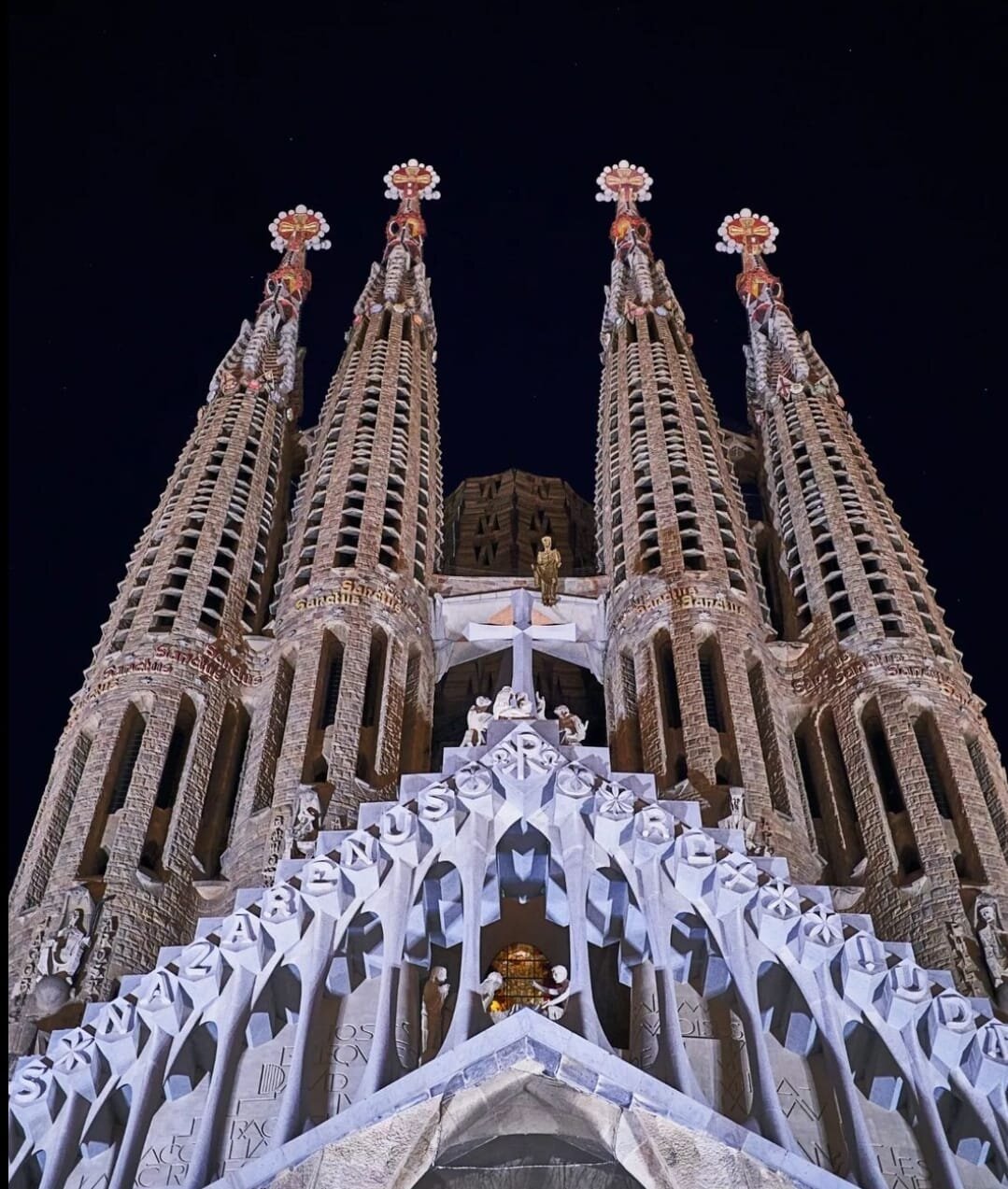
the Sagrada Familia, is a Catholic basilica in Barcelona (Spain), designed by the architect Antoni Gaudí. Started in 1882, it is still under construction. It is Gaudí’s masterpiece and the greatest exponent of Catalan modernist architecture. It is one of the most visited monuments in Spain, along with the Prado Museum and the Alhambra in Granada, and it is the most visited church in Europe after Saint Peter’s Basilica in the Vatican. When it is finished, It will be the tallest Christian church in the world.
The Sagrada Familia is a reflection of Gaudí’s artistic fullness: He worked on it for most of his professional career, but especially in the last years of his career, where he reached the culmination of his naturalistic style, in which he achieved a synthesis of all the solutions and styles tried up to that time. Gaudí achieved perfect harmony in the interrelation between structural and ornamental elements, between plastic and aesthetics, between function and form, between content and container, achieving the integration of all the arts into a structured and logical whole.
Since 1915, Gaudí devoted himself practically exclusively to the Sagrada Família, which represents the synthesis of the entire architectural evolution of the architect. After the completion of the crypt and the apse, still in neo-Gothic style, the rest of the temple was conceived in an organic style, which imitates the forms of nature, where ruled geometric shapes abound. The interior should resemble a forest, with a set of inclined tree-like columns, in a helical shape, which create a structure that is both simple and resistant. Gaudí applied to the Sagrada Familia all his discoveries previously experienced in works such as Park Güell or the Colonia Güell crypt and managed to create a temple that was structurally perfect as well as harmonious and aesthetic.
The Sagrada Familia has a Latin cross plan, with five central naves and a transept with three naves, and an apse with seven chapels. It boasts three façades dedicated to the Birth, Passion and Glory of Jesus and, when it is finished, it will have eighteen towers: four on each portal, making a total of twelve for the apostles; four on the transept, invoking the evangelists; one on the apse, dedicated to the Virgin; and the central tower-dome, in honor of Jesus, which will reach 172.5 m in height. The temple will have two sacristies next to the apse and three large chapels: that of the Assumption, in the apse; and those of Baptism and Penance, next to the main façade. Likewise, it will be surrounded by a cloister designed for processions and to isolate the temple from the outside. Gaudí applied a high symbolic content to the Sagrada Família, both in architecture and in sculpture, since he dedicated a religious significance to each part of the temple.
During Gaudí’s lifetime, only the crypt, the apse and, partially, the Nativity façade were completed, of which Gaudí only saw the tower of San Bernabé crowned. Upon his death, his assistant, Domingo Sugrañes, took over the construction; Subsequently, it has been under the direction of various architects, with Jordi Faulí i Oller being director of the works since 2012. Artists such as Llorenç and Joan Matamala, Carles Mani, Jaume Busquets, Joaquim Ros i Bofarull, Etsuro Sotoo and Josep Maria Subirachs, the latter author of the decoration of the Passion façade.
The work that Gaudí carried out, that is, the Nativity façade and the crypt, was included in 2005 by Unesco in the World Heritage Site “Works of Antoni Gaudí”. It is a monument declared in the register of Cultural Assets of National Interest of Catalan heritage and in the register of Assets of Cultural Interest of Spanish heritage with the code RI-51-0003813. It is also, since 2007, one of the 12 Treasures of Spain. Also, in 2007, it was chosen one of the Seven Wonders of Catalonia. The temple was declared a minor basilica on November 7, 2010 by Pope Benedict XVI. That year, the newly built nave The main building of the temple received the City of Barcelona Award for Architecture and Urbanism. The Sagrada Familia is also popularly known as the “Cathedral of the poor”, because of the homonymous painting by the modernist painter Joaquín Mir.
